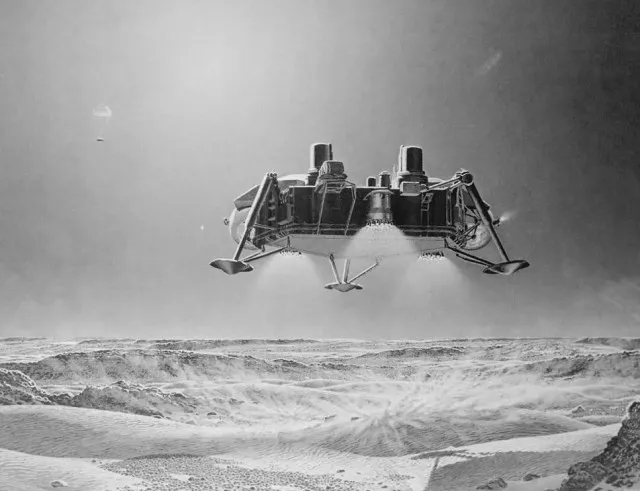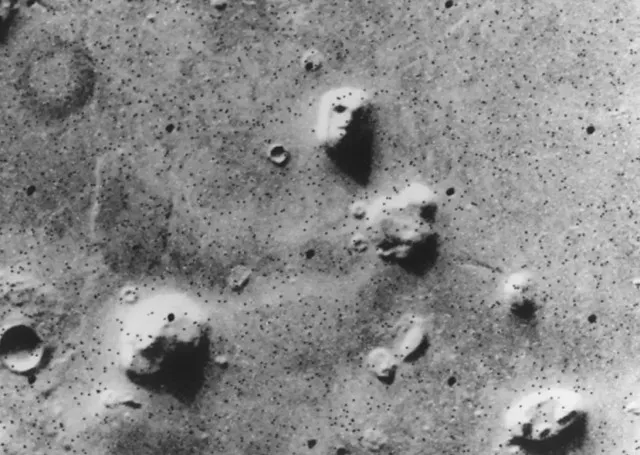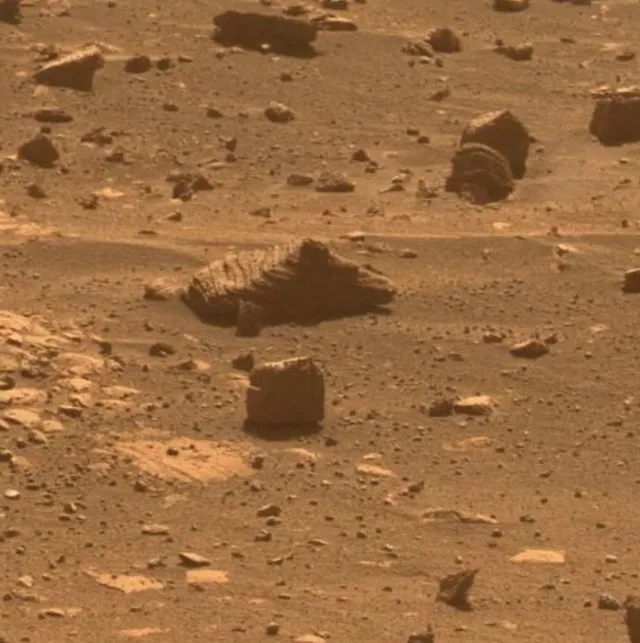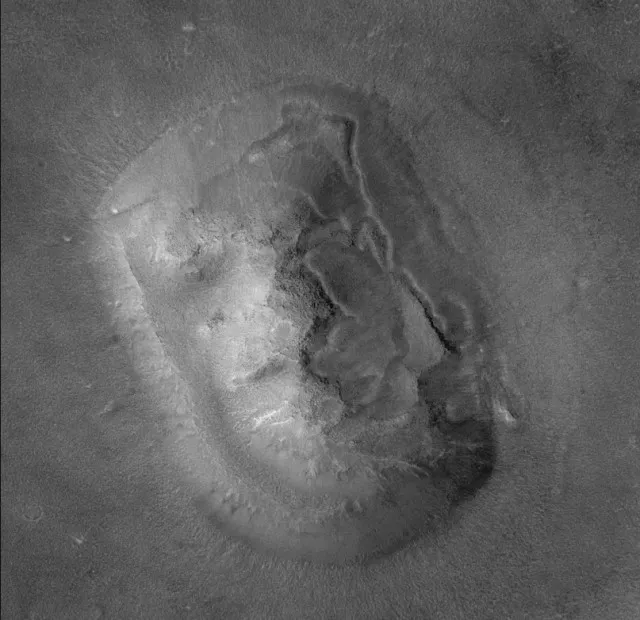The first spacecraft to land on Mars found a chilling rock formation resembling a human face, sparking theories about extraterrestrial life.
The first spacecraft to touch down on Mars took a striking snapshot.
Some believe this image showcases evidence of extraterrestrial beings residing on the enigmatic Red Planet.
Mars landing sparks debate over “human face” indicating alien life.
In 1976, NASA’s Viking 1 craft was busy snapping images of Mars to scout out a suitable landing spot for its companion, Viking 2.
Viking 1’s lander accomplished a historic feat by capturing the inaugural photograph from Mars’ surface on a day in July that same year.

Just five days later, it managed to seize an eerie image dubbed the ‘Face of Mars,’ a shadowy visage resembling that of a human face, as per NASA’s account.
This immense head, measuring nearly two miles from one end to the other, appeared to gaze back at the cameras from an area on Mars known as Cydonia.
The peculiar shadows cast over the colossal rock formation created the illusion of an eye, nose, and mouth.
This left space enthusiasts in a state of wonder upon the photograph’s unveiling.
Debate erupts over “Human Face” on Mars
NASA had anticipated that this image would seize the public’s interest and generate curiosity about Mars.
Some individuals speculated that the Face could be concrete proof of life existing on Mars.

This notion was dismissed by conspiracy theorists who alleged that NASA concealed such evidence.
On the flip side, advocates for NASA’s budget expressed a wish for an ancient Martian civilization to be uncovered.
The company explained: “Some people think the Face is bona fide evidence of life on Mars – evidence that NASA would rather hide, say conspiracy theorists.
Meanwhile, defenders of the NASA budget wish there was an ancient civilization on Mars.”
NASA clarified the mystery behind spooky “human face” on Mars
Despite initial intrigue, the reality behind the Face on Mars was ultimately disappointing.
NASA clarified that the speckled appearance in the image resulted from missing data, referred to as bit errors.
These errors stemmed from issues during the transmission of photographic data from Mars to Earth.

These bit errors affected a portion of what seemed to be the ‘eyes’ and ‘nostrils’ on the eroded rock mirroring a human face at the image’s core.
NASA’s website explains: “The speckled appearance of the image is due to missing data, called bit errors, caused by problems in transmission of the photographic data from Mars to Earth.
Bit errors comprise part of one of the ‘eyes’ and ‘nostrils’ on the eroded rock that resembles a human face near the center of the image.”
The rock formation itself resembled a butte or mesa, common geological features found in the western regions of America.
Mars Global Surveyor revisiting the Cydonia mystery
In April 1998, the Mars Global Surveyor captured a new image near Cydonia, where the mysterious Face is located.
Subsequently, on April 8, 2001, the Mars Global Surveyor revisited the area for a closer look.
The camera’s ‘absolute maximum resolution’ enabled a sharper depiction of the butte, with each pixel in the 2001 image covering 1.56 meters.

This was a significant improvement over the 43 meters per pixel in the best 1976 Viking photo.
Regrettably, the subsequent images failed to reveal the presence of a face.
This dashed hopes of a monumental rocky countenance keeping watch from the Martian surface.
Nonetheless, the possibility of other life forms observing us from afar remains a tantalizing prospect.
It offers a glimmer of hope for future revelations about the mysteries of the cosmos.